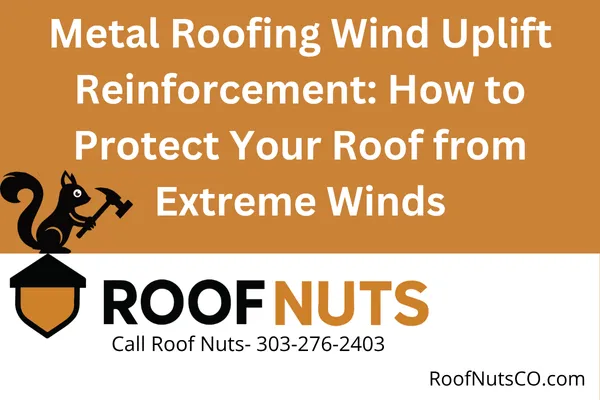
Metal Roofing Wind Uplift Reinforcement: How to Protect Your Roof from Extreme Winds
Metal Roofing Wind Uplift Reinforcement: What You Need to Know
When strong winds hit, your metal roof is the first line of defense. Without proper wind uplift reinforcement, even high-quality metal panels can lift, shift, or fail altogether. Whether you're in the windy plains of Colorado or the storm-prone neighborhoods of Georgia, understanding wind reinforcement is key to a durable, code-compliant roof.
What Is Wind Uplift in Metal Roofing?
Wind uplift happens when air pressure builds beneath roofing panels and tries to lift them off the structure. This pressure difference occurs during storms, hurricanes, and even strong gusts in open areas like the Front Range or rural Georgia counties.
How Metal Roofs Are Reinforced Against Wind Uplift
1. Fastener and Clip Design
Metal panels are secured using:
Exposed fasteners (used in lower-slope or utility applications)
Concealed clips (used in standing seam systems)
Clips and fasteners must be properly spaced and rated for uplift loads. According to the Metal Construction Association and NRCA guidelines:
Use panel-specific clips that allow thermal movement and resist wind stress.
Avoid generic or mismatched hardware—this is a leading cause of roof failures.
2. Panel Attachments and Seams
Standing seam panels offer better wind resistance because:
Their seams are either mechanically seamed or snap-locked for tight engagement.
The clips anchor into the structural deck without puncturing the panel.
Panel uplift resistance is especially improved when:
Installed over a solid substrate (like plywood or metal deck) with proper underlayment.
Clips are tested and approved under ASTM E1592 for uplift performance.
3. Decking and Substructure Matters
The roof deck plays a critical role:
Solid decking like plywood or metal with rigid insulation offers better fastener retention.
Deck deflection must be limited (max L/240 span) to avoid movement that weakens attachments.
If you're reroofing over old decking, have a contractor inspect for warping, water damage, or screw pull-through points.
4. Proper Panel Layout and Edge Reinforcement
Wind pressure is highest at:
Eaves
Ridges
Corners and rakes
To counter this, contractors should:
Double fasten or add extra clips in these zones
Use edge flashings and closures rated for uplift
Reinforce panel ends with "pinned" fasteners to prevent migration
Wind Uplift and Code Requirements
Both the International Building Code (IBC) and International Residential Code (IRC) now require:
Wind uplift testing per ANSI/FM 4474 or ASTM E1592
Installation to meet minimum design wind pressures based on ASCE 7 load criteria
Local enforcement in Colorado and Georgia may vary. Most jurisdictions follow:
90–120 mph basic wind speed zones
Higher pressures for buildings in open terrain or on ridgelines
FAQs
How do I know if my metal roof meets wind uplift standards?
Ask your contractor for uplift test data (ASTM E1592 or FM 4474) and confirm fastener/clip spacing meets local wind speed requirements.
Can I retrofit an existing metal roof for better wind performance?
Yes. Reinforcement can include:
Additional clips or fasteners
Upgraded edge metal
Structural retrofits to decking or purlins
What metal roofing types perform best in high winds?
Mechanically seamed standing seam roofs are top performers.
Panels tested to UL 580 Class 90 are rated for extreme conditions.
Work With a Trusted Local Contractor
Wind uplift isn’t just a code requirement—it’s critical protection for your home or business. Roof Nuts specializes in wind-rated metal roofing systems built for Colorado and Georgia’s toughest weather.
📍 Colorado & Georgia Homeowners:
Call us today to make sure your roof stands up to the next storm.
📞 CO: 303-276-2403 | https://RoofNutsCO.com
📞 GA: 404-476-6851 | https://RoofNutsGA.com
